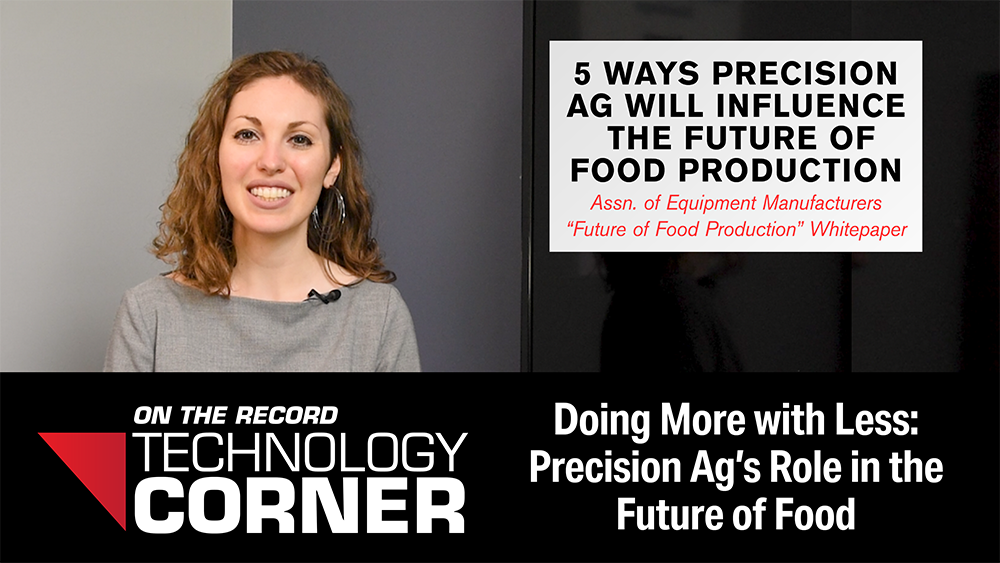A recent whitepaper from the Assn. of Equipment Manufacturers (AEM) outlines 13 trends that could influence how food is produced — many of which hinge on adoption of precision agriculture technologies.
As a growing population, climate change, supply chain challenges, demographic shifts and labor shortages are pushing farmers to do more with less, precision agriculture is prime to influence the future of global food production.

Precision ag is key to helping farmers produce more with less environmental impact.
The AEM’s Environmental Benefits of Precision Agriculture study found farmers using precision technology saw a 4% increase in crop production, a 9% reduction in herbicide and pesticide use, and a 6% reduction in fossil fuel use.

With food security contingent on water security, the AEM predicts embracing precision irrigation will help ensure a stable food supply. The association’s study found growers using precision irrigation reduced their water use by 4%.

The AEM report calls connectivity the lynchpin of agriculture’s future because connectivity enables precision technologies, artificial intelligence and automation, and other components of the food chain of the future.
The report says only 25% of U.S. farms use connected equipment or devices to access data. As reliable internet access becomes more available, using technology becomes more practical, and agriculture will shift to be more productive while conserving resources.

The AEM report predicts artificial intelligence will begin to assume a prominent role throughout the entire crop production process over the next 10 years.
Equipment will work smarter and do more using AI, machine learning and image recognition. The report cites a 24% increase in net returns when including both input savings and yield increases due to less compaction with the use of autonomous equipment.

Finally, as food production changes, so will the business models of farm equipment dealers and manufacturers.
The AEM predicts a rise of Equipment as a Service (EaaS), giving farmers the opportunity to lease equipment for a specific time period, rather than buy the machine. Dealers could include additional services, such as data analytics and preventative maintenance, in the price of the rental.
Custom farming will also become popular as farmers look to add more acres without assuming the risk of industry will also shift to outcome-based pricing models — programs that guarantee a certain yield goal, elimination of disease or other metric — as digital tools make outcomes easier to guarantee.
Read more about the AEM’s Future of Food Production whitepaper.





Post a comment
Report Abusive Comment